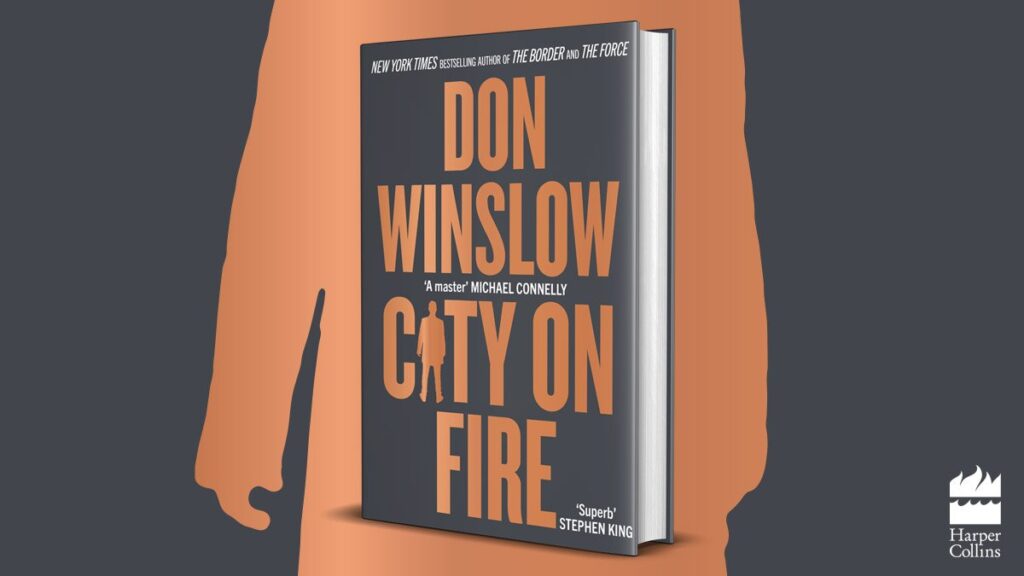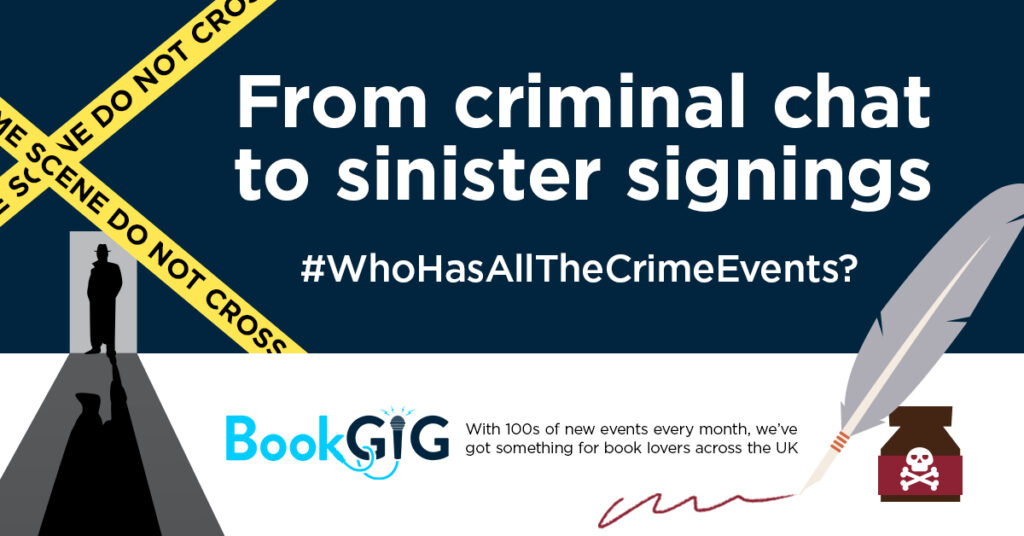Inspired by Soul Murder, guest blogger Adele from Un:Bound takes a look at the most Memorable Deaths in Fiction.
Playing Cluedo as a child I always felt certain people should use certain weapons, I
felt the game lacked verisimilitude otherwise. Professor Plum clearly would have to use the candlestick. Miss Scarlett should use the revolver like any self respecting femme fatale, Mrs Peacock, portrayed on her card as older and wealthy seemed a shoo in for the dagger since poison wasn’t an option, Colonel Mustard as an army sort ought to have the strength to use the rope and so on. I was possibly putting too much thought into the game, but a steady diet of Morse, Poirot, and Miss Marple will do that to a child.
So the trend was set, it matters to me how you kill people. That’s only reasonable though; there should be method to the madness and meaning to be found behind the method. In Soul Murder (Daniel Blake) the victims are burned alive. This is not only grotesque enough to be memorable, but also raises questions for both the detectives and the reader, the most fundamental of which is: why didn’t the killer take Scott Evil’s advice? “Just shoot him now … I’ll go get a gun and we’ll shoot him together …”
Shooting is quick, effective and simple. You need the character dead? Bang. Dead. Done. You can now get on with progressing plot or charting the emotional fall. The shooting itself … not so memorable. I can’t begin to count how many shootings I’ve witnessed in a book. The only one I remember was because of the gut wrenching emotional wreckage that the protagonist (and I) was left with afterwards (Terrorbyte, Cat Connor). A gun is a functional murder weapon, it tells us very little, even less if you are British and have no interest in or access to guns. As Scott’s dear father, Dr Evil, might say: “Where’s the fun in shooting someone, when you can feed them to flesh-eating sea bass instead?”
If a bullet can be impersonal and perfunctory, then the old stand-by of a terrorist atrocity risks the same problems, but on a larger scale. The impressive body count arising from a blown-up building or poisoned water supply does not make a reader care for all those fictional corpses, unless the writer makes the impersonal personal by visiting some of the potential victims moments before everything explodes.
What makes the method of death memorable? For me, as a reader, I have to engage with a character before they die, or understand how important they are to the hero I’m rooting for. If the victim is the only person able to clear the protagonist’s name, their death raises the stakes and that can be enough to make the reader pay attention.
An unusual MO can make a big impact. Blake’s human torch victims in Soul Murder achieve this. One of the many shiny crime dramas on TV these days (Criminal Minds) said you have to look at what the killer does that they don’t have to do, and what is more unnecessary than burning someone while they are still alive?
Another example is one of my favourite scenes in Silver. A character called Konstantin strips naked, folds his clothes, beats a man to death with his fists, showers, dresses and leaves. It’s not the brutality that makes this scene shocking; it’s the fact that Koni is one of the good guys.
Shock comes from context and that can extend beyond the boundaries of plot. Agatha Christie’s readers expect death to be genteel and understated: a quaint poisoning, for example. They don’t expect the bloody and brutal throat cutting of Simian Lee (Hercule Poirot’s Christmas). This sort of killing is so unusual for Christie that it has its own mythology, she apparently wrote the story to satisfy her brother’s requests for a more violent and grisly murder. Even so, it wouldn’t do for the amicable village doctor or bumbling vicar to commit such a crime. Instead the story draws on a more sordid and conspicuously foreign source: the diamond mining industry in Africa. I can’t remember the names of most of the victims Poirot has helped find justice for, but Lee is firmly imprinted despite his demise being relatively tame compared to the novels of today.
So those are some of my memorable deaths, I asked around and gathered a few more.
Sharon
Don’t Look Now by Daphne Du Maurier
“The dwarf in the red cloak killing the husband in Don’t Look Now, because it was not only creepy and atmospheric, but totally unnecessary. He shouldn’t have gone back into Venice so he shouldn’t have been there for it to happen at all. It was really creepy at the time and I’m still not all that interested in visiting Venice.
Steven Savile (http://www.stevensavile.com/)
Harry’s Game by Gerald Seymour
“It’s the death of Harry Brown from Gerald Seymour’s Harry’s Game. I saw it on TV before I ever read it in print, but there’s something intense about a Pyrrhic victory. The set up is 1970s Northern Ireland in the heart of the Troubles. Harry, with far too little preparation has gone deep undercover, infiltrating in the Provo culture in a last ditch attempted to find the killer of a high ranking British politician, Henry Danby. Harry finds his man, and in an intense finale, takes him out in the middle of the street, knowing even as he does he’s signing his own death warrant because their are IRA snipers watching.. then he takes a bullet. One shot and it drives him to the floor and we know it’s all over. This guy we’ve been rooting for, for 400 pages is bleeding out in front of us. It was my first experience of losing a main character. I’d fall short of calling Harry a hero, antagonist suits better. It wasn’t clever; it wasn’t an ingenious mouse trap of a murder. It was one shot. But sometimes that’s all it needs. The emotional punch of it means that 28 years on I still remember it.”
Cat Connor (http://catconnor.blogspot.com/)
Roadside Crosses by Jeffrey Deaver
“All right then, after much thought – and yes I resorted to pulling books off shelves – a memorable death for me (recent times and not one of mine… damn!) is the first death in Jeffrey Deaver’s, Roadside Crosses: a teenager left to drown. The thought of dying tied in the trunk of a car, knowing you are going to drown … so not nice. But it’s most memorable because Tammy didn’t die, the attacker miscalculated the tide – you are just led to believe she did for a few chapters. Yes I cheated it’s not a real death – it’s an implied death.”
Vincent Holland-Keen (http://dragonsfandango.blogspot.com/)
Across the Bridge (film, 1957) dir. Ken Annakin
“My usual taste in fiction means I should choose a death where the hero dispenses the despicable villain with bombastic flair and leaves me pumping my fist in the air going ‘USA! USA! USA!’. Even though I’m English and allergic to such arrant shows of emotion. Instead, I’m going to pick a death from a film I think I stumbled across as a kid on BBC2. Back then they showed black and white films at six o’clock and these were infinitely preferable to the dreary old news on the other channels. The film was Across the Bridge, based on a Graham Greene short story. It stars Rod Steiger as a self-serving industrialist who flees New York to Mexico to escape arrest for embezzlement. He ends up stuck in a border town being exploited by the local police on one side of the titular bridge, while a Scotland Yard inspector waits on the other, trying to lure him back across to US jurisdiction and justice.
“Steiger’s character is unpleasant and unsympathetic. He even attempts murder to save himself from jail, but circumstances contrive to saddle this selfish man with a friend; a dog called ‘Dolores’. In the end, he’s beaten down by a world just as unpleasant and unsympathetic as he is. He has nothing left, except Dolores, and when she finally crosses the bridge, he tries to bring her back. Scotland Yard is waiting. He runs. Shots are fired. And this man that no one could love is killed.
“Yeah, I cried a little, but that’s why I’ve chosen this death. Because when it came, I was moved; I cared. And because I’m British and cynical and emotionally barren, that’s a rare thing for a film or book to achieve.”
These favourite deaths were given in a quick Twitter survey:
“Being crushed by a falling pig – Graham Greene” (@AnhagaBallas)
“Death by orang-utan – Edgar Allen Poe” (@mygoditsraining)
“Gravity kills a whale and a bowl of petunias – Douglas Adams” (@neverwhere)
“Esmeralda’s kite – Iain Banks” (@kevmcveigh)
If you’ve been as fascinated as we have by this article and want to get yours hands on more material from Adele then visit her blogs here:


